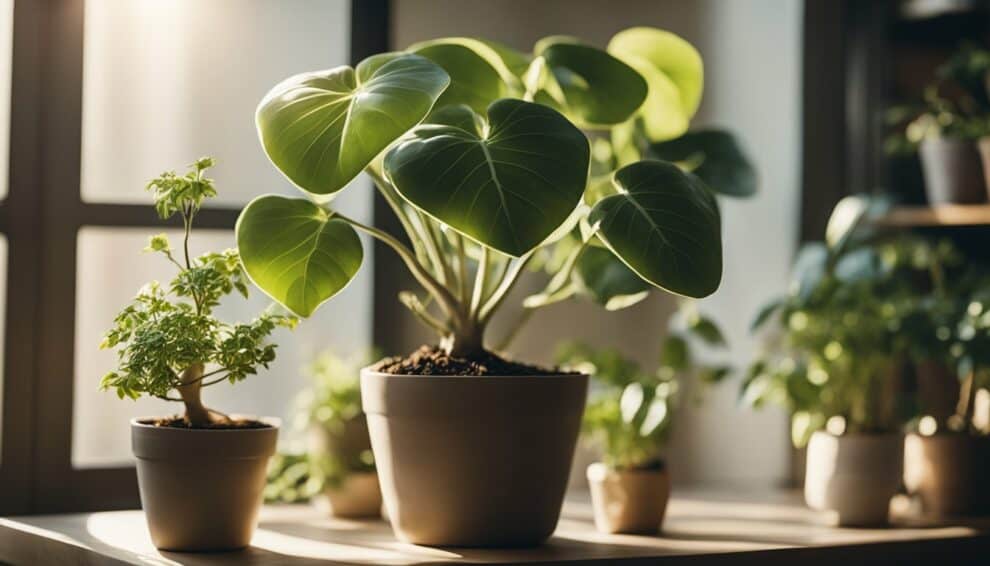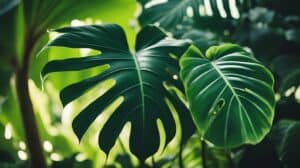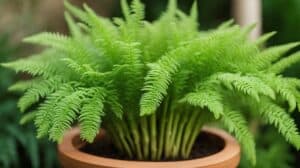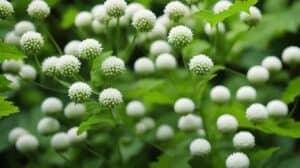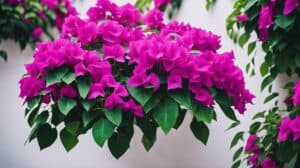Dioscorea elephantipes, also known as the Elephant’s Foot plant, is a unique and unusual plant species that is native to South Africa.
This plant is known for its thick, woody stem that resembles an elephant’s foot, hence the name.
While it is not a common houseplant, it is becoming increasingly popular due to its striking appearance and easy care requirements.

Caring for an Elephant’s Foot plant is relatively simple, making it an ideal choice for those who are new to gardening or have limited space.
This plant prefers well-draining soil and bright, indirect light.
It can also tolerate periods of drought, making it a great choice for those who may forget to water their plants regularly.
With proper care, an Elephant’s Foot plant can grow up to six feet tall and become a stunning focal point in any room.
Understanding Dioscorea Elephantipes
Botanical Profile
Dioscorea Elephantipes, commonly known as Elephant’s Foot, is a unique and fascinating plant that belongs to the family Dioscoreaceae.
It is a perennial succulent that can grow up to 30 cm in height and 60 cm in diameter.
The plant has a distinctive, swollen, and woody caudex that resembles an elephant’s foot, hence its name.
The leaves of Dioscorea Elephantipes are deciduous and grow in a rosette at the top of the caudex.
They are green, lanceolate, and can grow up to 20 cm in length.
The plant also produces small, greenish-yellow flowers that are borne on a long, slender stalk.
Native Habitat
Dioscorea Elephantipes is native to the dry, rocky regions of South Africa, specifically in the Northern Cape and Western Cape provinces.
It grows in well-draining soils and is adapted to survive in arid conditions with little rainfall.
In its natural habitat, the plant grows in full sun and can tolerate high temperatures during the day and cooler temperatures at night.
It is also adapted to withstand strong winds and occasional frost.
Overall, understanding the botanical profile and native habitat of Dioscorea Elephantipes is essential for providing proper care and ensuring the plant thrives in a home garden or indoor setting.
Essential Care Guidelines

Lighting Requirements
The Elephant’s Foot Plant prefers bright, indirect sunlight.
Direct sunlight can cause the plant to scorch, so it’s best to place it near a window with filtered light.
If the plant doesn’t receive enough light, it may become leggy and weak.
Watering Routine
The watering routine for the Elephant’s Foot Plant should be infrequent and cautious.
Overwatering can cause the plant to rot, while underwatering can cause it to become dehydrated.
It’s best to wait until the soil is completely dry before watering the plant.
During the winter months, the plant should be watered even less frequently.
Soil Composition
The Elephant’s Foot Plant prefers well-draining soil with a pH between 6.0 and 7.0.
A mixture of sand, perlite, and peat moss can be used to create a suitable soil composition.
The plant should be repotted every two to three years to ensure that the soil remains fresh and nutrient-rich.
Temperature and Humidity Control
The Elephant’s Foot Plant prefers warm temperatures between 65°F and 85°F.
It’s important to keep the plant away from cold drafts and air conditioning vents.
The plant also prefers high humidity levels, so it’s best to mist the leaves regularly or place a humidifier near the plant.
Overall, the Elephant’s Foot Plant is a unique and beautiful addition to any plant collection.
With proper care and attention, this plant can thrive and bring joy to its owner for many years to come.
Propagation and Growth

Seed Propagation
The Elephant’s Foot Plant can be propagated by seed, but it requires patience.
The seeds of Dioscorea Elephantipes have a hard outer shell that must be removed before planting.
Soaking the seeds in water for a few days can help to soften the shell. Once the shell is removed, plant the seed in well-draining soil and keep it moist.
It can take several weeks or even months for the seed to germinate.
Cuttings and Division
Propagation by cuttings or division is a faster method than seed propagation. Cuttings should be taken from the tuber in the spring or early summer.
The cutting should be at least 4 inches long and have a few leaves attached. Plant the cutting in a well-draining soil mix and keep it moist until it roots.
Division can be done when the plant has outgrown its container or the tuber has become too large.
Carefully remove the plant from the soil and gently separate the tubers. Each tuber should have at least one growing point.
Replant the tubers in fresh soil and water thoroughly.
It is important to note that the Elephant’s Foot Plant is a slow-growing plant, and it can take several years for it to reach its full size.
However, with proper care and patience, it can be a unique and beautiful addition to any plant collection.
Common Issues and Solutions

Pest Infestations
The Elephant’s Foot Plant is generally pest-resistant, but it can occasionally suffer from infestations of spider mites, mealybugs, and scale insects.
These pests can cause damage to the leaves and stems of the plant, which can lead to stunted growth and even death.
To prevent pest infestations, it is essential to keep the plant clean and free of dust and debris.
If an infestation occurs, it is best to treat the plant with a mild insecticide or by wiping the leaves with a damp cloth.
Diseases
The Elephant’s Foot Plant is susceptible to a few diseases, including root rot and fungal infections.
Root rot can occur if the plant is overwatered or if the soil does not drain properly.
Fungal infections can also occur if the plant is kept in a humid environment.
To prevent these diseases, it is important to ensure that the plant is not overwatered and that the soil is well-draining.
If a disease is suspected, the affected parts of the plant should be removed, and the plant should be treated with a fungicide.
Environmental Stress
The Elephant’s Foot Plant can also suffer from environmental stress, which can cause the leaves to turn yellow or brown and fall off the plant.
Environmental stress can be caused by a lack of sunlight, overwatering, or exposure to extreme temperatures.
To prevent environmental stress, it is important to provide the plant with the proper amount of sunlight and to avoid overwatering.
If the plant is exposed to extreme temperatures, it should be moved to a more suitable location.
Frequently Asked Questions

What are the ideal lighting conditions for a Dioscorea elephantipes?
Dioscorea elephantipes prefers bright, indirect light. It is best to place the plant near a window that receives filtered light.
Direct sunlight can scorch the leaves of the plant, so it is important to avoid placing it in direct sunlight.
Can I grow Dioscorea elephantipes outdoors in a temperate climate?
Dioscorea elephantipes is native to South Africa and prefers warm temperatures. It is best to grow the plant indoors in cooler climates.
If you do choose to grow the plant outdoors, it is important to protect it from frost and extreme cold temperatures.
What is the proper watering schedule for an Elephant’s Foot plant?
Dioscorea elephantipes prefers well-draining soil and does not like to be overwatered.
It is best to water the plant when the top inch of soil is dry to the touch.
During the winter months, when the plant is dormant, it is important to reduce watering.
How do you propagate Dioscorea elephantipes?
Dioscorea elephantipes can be propagated through seed or by dividing the tuber.
To propagate by seed, the seeds should be soaked in water for 24 hours before planting.
To propagate by dividing the tuber, the tuber should be carefully divided into sections, making sure each section has at least one growing point.
What are the signs of dormancy in Elephant’s Foot plants?
Dioscorea elephantipes goes dormant during the winter months.
Signs of dormancy include yellowing and dropping leaves, as well as a decrease in watering needs.
It is important to reduce watering during this time to avoid overwatering the plant.
How can you tell apart male and female Dioscorea elephantipes?
Dioscorea elephantipes is a dioecious plant, meaning it has separate male and female plants. The easiest way to tell them apart is by the flowers.
Male plants have small, white flowers, while female plants have larger, greenish-yellow flowers.






